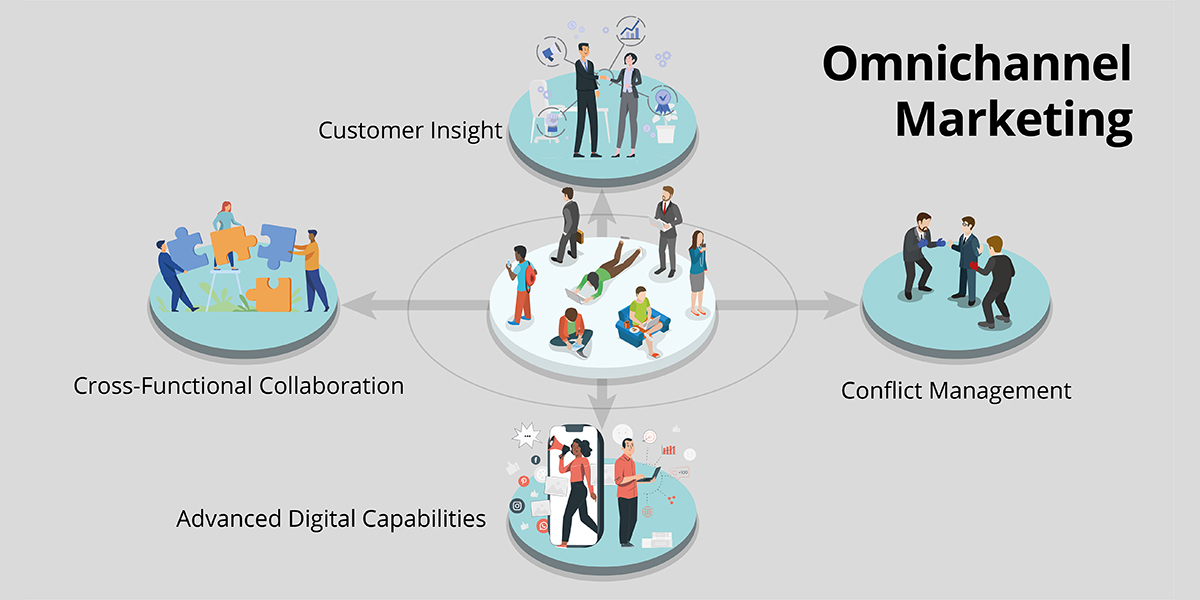
03 Mar Omnichannel Marketing in B2B is Here to Stay. Are you Prepared?
In the impossibly uncertain customer journey, companies today are devising marketing strategies that comprise holistic and seamless messaging and experience across channels and devices. Known as omnichannel marketing, this customer-centric approach, which had been gaining traction for some years now, become a standard and predominant path for B2B sales during the pandemic.
McKinsey’s research on B2B decision-makers confirms that post-pandemic, omnichannel marketing has emerged as a critically important feature for B2B sales globally. Even as businesses get back to in-person engagement, buyers have begun preferring a cross-channel mix, choosing in-person, remote, and digital self-serve interactions in equal measure.
However, in many cases, B2B suppliers face Omnichannel implementation challenges, mainly because they look at each channel as a separate entity. The key to the success of an omnichannel marketing strategy is the creation of a smooth, transparent, and interconnected network of channels that are accessible to customers at various stages during the buying process.
Getting it right
B2B customers are leaning toward omnichannel, albeit with the clear expectation of performance and guarantee of quality products and services. Here are some strategic factors that need to be considered when moving to an omnichannel approach from a multi-channel approach (channel-centric, where each channel works independently):
- In-Depth Customer Insight
B2B buyers’ expectations and buying processes are similar to that of B2C buyers. And therefore, it is important to collect in-depth insights about each customer and deliver consistent messages using CRM tools, conducting primary research, reviewing transaction logs, and conducting targeted research, thereby understanding customer preferences at each touchpoint. - Pre-emptive conflict management
The pandemic changed the role of field sales personnel, who began working from home, often compromising their relationship with distributors. The success of the omnichannel model depends on addressing conflict and concerns proactively through segmentation and identifying the right channel mix. - Advanced and latest digital capabilities
Investing in the latest hardware and software helps seamless integration between sales and IT. Companies that use advanced analytics and the latest sales tools, marketing automation with digital analytics to cross-/upsell and enable dynamic pricing, digital marketing, and sales to drive personalization at scale, etc. find themselves at a competitive advantage. - Seamless and speedy cross-functional collaboration:
Another critical factor for success is investing in the right talent pool and getting teams from different, but related functions, such as commercial and growth, to seamlessly collaborate and work together. Companies can achieve this through regular cross-functional meetings, quick decision-making processes, a problem-solving approach, and the implementation of cross-functional processes.
Should B2B Sellers Transition to Omnichannel?
Transitioning to Omnichannel marketing is not easy, but once it is done, B2B suppliers will have a more elevated understanding of customer behavior, enabling them to target future services in a better manner. They will also be able to identify strategies that work and ones that don’t. Attaining omnichannel excellence can be a game-changer for businesses and help them stay ahead of the competition, save costs, increase customer satisfaction, and enable business growth.



No Comments